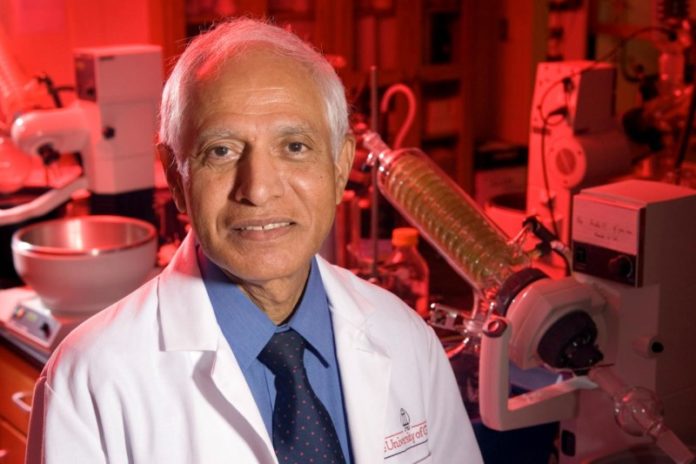
Researchers at the University of Georgia have developed a new small molecule drug that may serve as a treatment against multi-drug resistant tuberculosis, a form of the disease that cannot be cured with conventional therapies. They describe their findings in a paper published recently in Bioorganic and Medicinal Chemistry Letters.
Nine million people contracted tuberculosis in 2013, and 1.5 million died from the disease, according to the World Health Organization. While standard anti-TB drugs can cure most people of Mycobacterium tuberculosis infection, improper use of antibiotics has led to new strains of the bacterium resistant to the two most powerful medications, isoniazid and rifampicin.
“Multi-drug resistant TB is spreading rapidly in many parts of the world,” said Vasu Nair, Georgia Research Alliance Eminent Scholar in Drug Discovery in the UGA College of Pharmacy and lead author of the paper. “There is a tremendous need for new therapies, and we think our laboratory has developed a strong candidate that disrupts fundamental steps in the bacterium’s reproduction process.”
Just like other living organisms, the genetic information contained in M. tuberculosis undergoes a complex process known as transcription in which the bacterial enzyme, DNA-dependent RNA polymerase, or RNAP, produces TB RNA. This molecule is involved in processes that produce critical bacterial proteins that the organism needs to survive.
The compound Nair and his colleagues developed works by binding to magnesium and specific amino acids found within the bacterium, interrupting the production of RNA.
“The compound we developed strongly inhibits the growth of the bacterium and renders it incapable of reproducing and spreading infection,” Nair said. “More importantly, the compound shows very low levels of cytotoxicity, which means that it is not harmful to the body.”
The research team members also performed extensive studies to determine if their newly developed compound had an appropriately long half-life and could be cleared from the body through normal biochemical mechanisms.
“All our tests were very favorable,” Nair said. “The half-life is a little over 14 hours, and all traces of the drug are expected to be cleared through normal bodily functions.”
While Nair and his colleagues were pleased with their new compound, they were surprised to discover through preliminary experiments that it also exhibited strong anti-HIV properties, opening the door for dual therapeutic applications.
A dual-purpose drug would be a windfall for clinicians, because the risk for developing TB is between 26 and 31 times greater in people living with HIV than those without HIV infection, according to the WHO.
“This discovery of dual activity against both retroviruses and drug-resistant gram-positive bacteria is unique and opens a new chapter in drug discovery in this area,” Nair said.
Story Source:
The above story is based on materials provided by University of Georgia. The original article was written by James Hataway. Note: Materials may be edited for content and length.
Journal Reference:
- Vasu Nair, Maurice O. Okello, Naveen K. Mangu, Byung I. Seo, Machhindra G. Gund. A novel molecule with notable activity against multi-drug resistant tuberculosis. Bioorganic & Medicinal Chemistry Letters, 2015; DOI: 10.1016/j.bmcl.2015.01.050
